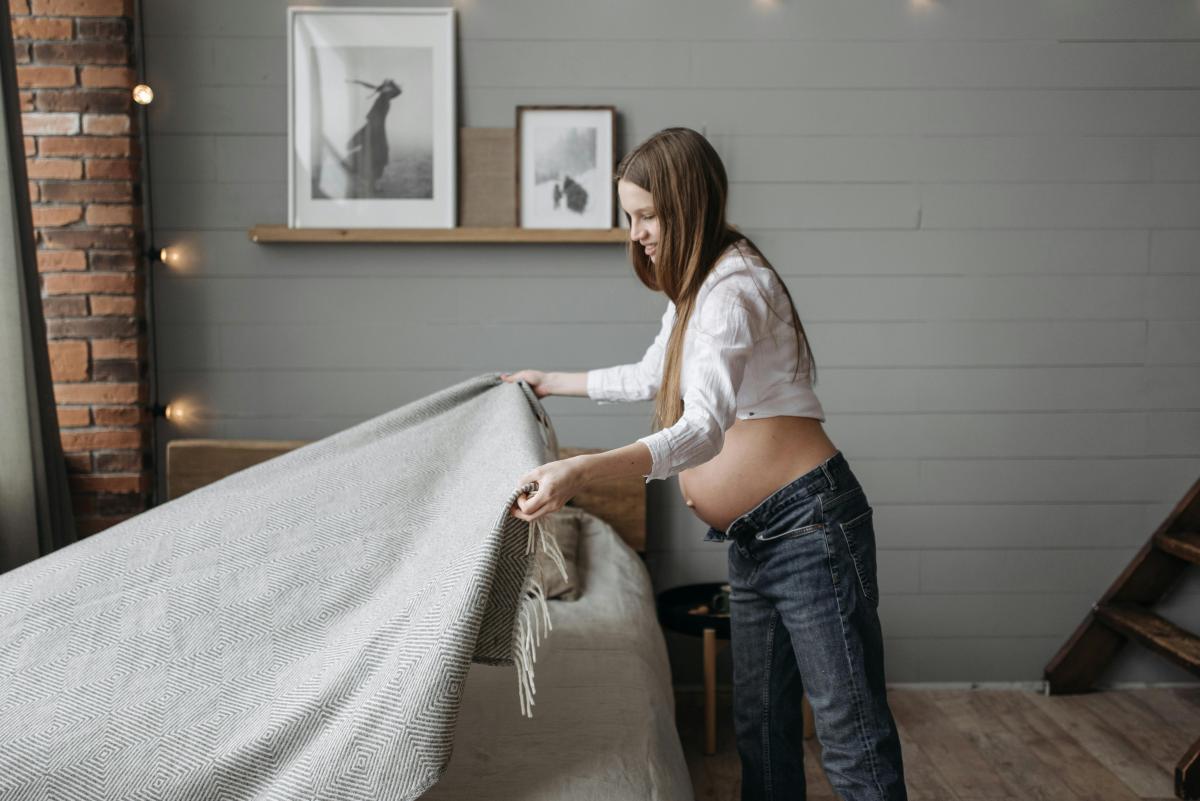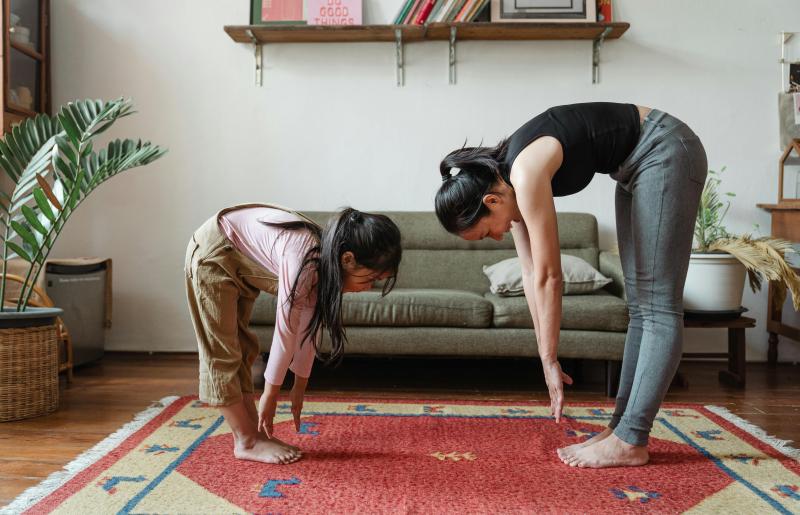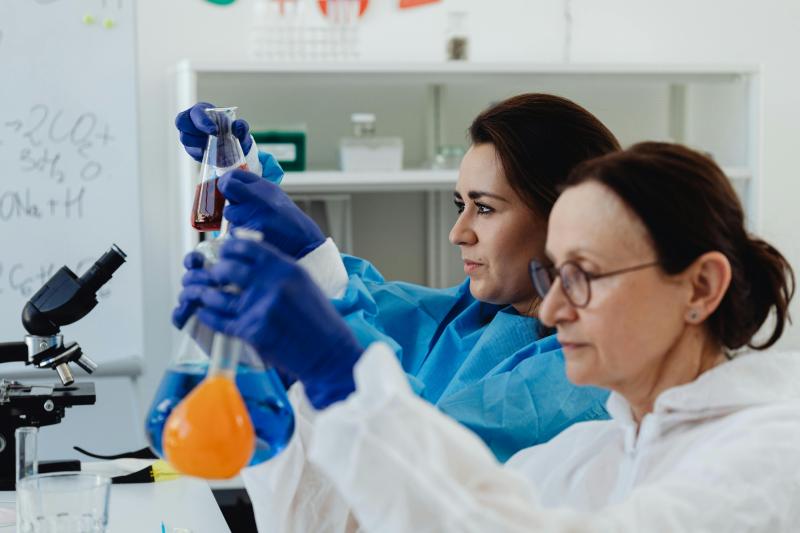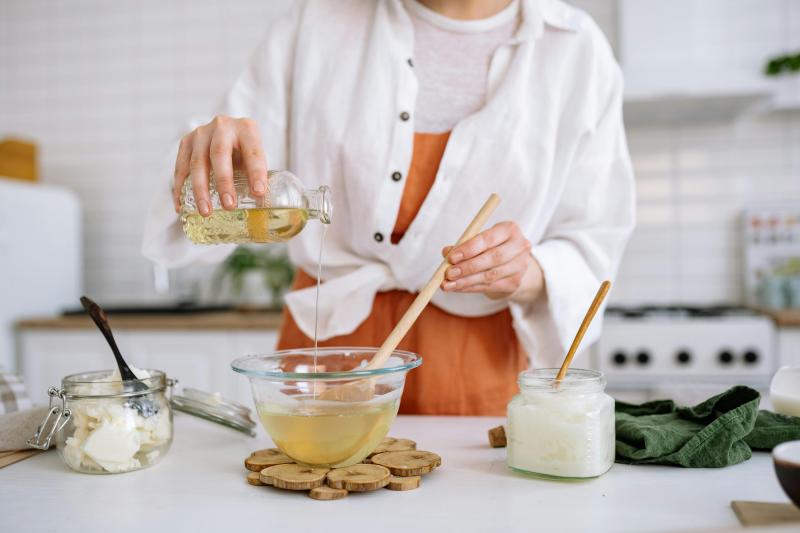|
BY JONATHAN ESSARY · June 25, 2025 |
|
READ EST: 4 MINS |
What to expect, when you're expecting
When you see those two pink lines, everything changes, including how you view the innocent-looking bottles under your kitchen sink [1]. Pregnancy transforms even the most routine household tasks into moments of careful consideration, as expectant mothers suddenly realize that every chemical they encounter could potentially affect their developing baby [2]. The overwhelming urge to create the perfect nest for your little one often collides with growing concerns about the safety of conventional cleaning products, leaving many pregnant women feeling uncertain about how to maintain a clean home without compromising their health [3].
This guide addresses the unique cleaning challenges that pregnancy brings, offering evidence-based insights into which products pose genuine risks and which alternatives provide both safety and effectiveness [1][4]. Rather than adding to the confusion with conflicting advice, we'll explore the science behind pregnancy-safe cleaning while providing practical solutions that fit into your evolving lifestyle as an expectant mother.
UNDERSTANDING YOUR CHANGING RELATIONSHIP WITH CLEANING
Pregnancy doesn't just change your body—it fundamentally alters your sensitivity to the environment around you [5]. Expectant mothers often experience heightened awareness of smells, increased respiratory sensitivity, and a powerful instinct to prepare their homes for their baby's arrival [3][6]. This phenomenon, known as nesting, typically intensifies during the third trimester and can manifest as an almost overwhelming urge to clean and organize every corner of your living space [3][7].
Recent research reveals that pregnant women require up to 20% more oxygen than usual, meaning they breathe faster and deeper throughout their pregnancy [8]. This increased respiratory rate means greater exposure to whatever chemicals are present in your indoor air, making the choice of cleaning products more critical than ever before [5][8]. The developing fetus receives oxygen and nutrients directly from the mother's bloodstream, creating a direct pathway for any harmful substances the mother encounters [2][9].
The hormonal changes of pregnancy also affect how your body processes chemicals [5]. During this vulnerable period, your natural defenses may be compromised, making you more susceptible to irritation from fumes and chemicals that might not have bothered you before pregnancy [4][10]. Understanding these physiological changes helps explain why products you used safely before conception may now cause headaches, nausea, or respiratory irritation.
THE SCIENCE BEHIND PREGNANCY AND CHEMICAL EXPOSURE
Groundbreaking research has revealed concerning connections between household cleaning product exposure during pregnancy and long-term health outcomes for children [11][12][13]. A comprehensive study following over 7,000 British children found that prenatal exposure to common household cleaners was associated with persistent wheezing after birth, with children who experience respiratory problems before age three showing increased likelihood of breathing difficulties later in life [13].
Perhaps most alarming is research indicating that some cleaning chemicals can affect fetal development even without direct maternal exposure [14]. Studies on quaternary ammonium compounds—commonly found in disinfectants, hand wipes, and personal care products—showed that simply using these cleaners in the same room as laboratory animals was sufficient to cause birth defects similar to spina bifida and anencephaly in humans [14]. This finding suggests that airborne exposure through routine cleaning activities may pose previously unrecognized risks to developing babies.
The timing of exposure appears crucial, with the first trimester representing a particularly vulnerable window for fetal development [9]. During these early weeks, when many women don't yet know they're pregnant, exposure to volatile organic compounds from cleaning products may increase risks for birth defects, neurocognitive impairment, and respiratory problems [9]. A Spanish study involving over 2,000 families found that mothers who used cleaning sprays, air fresheners, or solvents during pregnancy had children with significantly higher rates of wheezing and lower respiratory tract infections during their first year [15].
CRITICAL CHEMICALS TO AVOID DURING PREGNANCY
HIGH-RISK CHEMICAL CATEGORIES
Several classes of chemicals commonly found in household cleaners pose particular concerns for expectant mothers [1][16]. Glycol ethers, found in glass cleaners and all-purpose sprays, have been linked to behavioral concerns, including attention deficit and hyperactivity in children whose mothers reported exposure during pregnancy [16][17]. These solvents can be listed on labels as 2-butoxyethanol or methoxydiglycol, making them difficult for consumers to identify [4].
Phthalates represent another significant concern, particularly because they're rarely listed directly on cleaning product labels [4][16]. When you see "fragrance" listed as an ingredient, there's a high probability that the fragrance contains phthalates, which have been linked to adverse effects on male children, reduced sperm count in adult men, and higher risk of preterm birth [16][17]. Prenatal exposure to phthalates may increase the risk of congenital reproductive anomalies, making fragrance-free products the safer choice for expectant mothers [4].
Synthetic musks, including compounds like Tetramethyl Acetyloctahydronaphthalenes, are found in laundry products and dish soap [16][17]. These chemicals have been identified as reproductive toxicants in animal studies and are commonly detected in breastmilk, though research on their effects on human reproductive health remains limited [17]. The persistence of these chemicals in the body means that exposure during pregnancy can continue to affect both mother and baby long after birth.
SPRAY PRODUCTS AND AEROSOLS
Research consistently identifies spray cleaners and aerosol products as particularly problematic during pregnancy [4][11][15]. A large-scale study found that children whose mothers used cleaning sprays during pregnancy had a 37% increased risk of wheezing and were more likely to develop lower respiratory tract infections [15]. The fine particles created by spray application allow chemicals to penetrate deeper into the respiratory system, increasing both maternal and fetal exposure [4][5].
Air fresheners pose dual risks, combining problematic delivery methods with concerning chemical compositions [4][17]. Studies link prenatal exposure to air fresheners with increased headaches and depression in mothers, as well as ear infections and diarrhea in their babies [17]. The synthetic fragrances in these products often contain undisclosed phthalates and other endocrine disrupters that can affect hormonal development [4][16].
SAFE CLEANING STRATEGIES FOR EACH TRIMESTER
FIRST TRIMESTER: FOUNDATION BUILDING
The first trimester requires the most cautious approach to cleaning, as this period represents the highest risk for developmental abnormalities [9][18]. During these early weeks, fatigue is common, making it an ideal time to simplify your cleaning routine and eliminate the most problematic products [18][10]. Focus on reading labels carefully and removing any products marked with words like "toxic," "danger," "poison," or "corrosive" [10].
This is also the perfect time to begin transitioning to natural alternatives without feeling pressured to maintain your usual cleaning intensity [18]. Simple substitutions like vinegar and water for glass cleaning, or baking soda for gentle scrubbing, can reduce your chemical exposure while you adjust to pregnancy-related changes in energy and smell sensitivity [10][19]. Opening windows regularly becomes particularly important during this trimester, as fresh air circulation helps dilute any chemical fumes while supporting your increased oxygen needs [8][10].
SECOND TRIMESTER: ENERGY AND ORGANIZATION
The second trimester often brings renewed energy and may coincide with early nesting behaviors [3][7]. This period offers an excellent opportunity to research and gradually introduce safer cleaning products while establishing new routines that will serve you through the remainder of your pregnancy [7][18]. As your sense of smell may still be heightened, continue prioritizing fragrance-free products and ensuring adequate ventilation during any cleaning activities [20][10].
Many expectant mothers find this trimester ideal for major organizational projects and deep cleaning tasks [3][7]. However, it's crucial to pace yourself and avoid overexertion, particularly as your body begins to change more noticeably [18][19]. Consider this the time to invest in high-quality, pregnancy-safe cleaning products that will support both your current needs and your post-baby cleaning requirements [21][22].
THIRD TRIMESTER: INTENSIVE NESTING WITH SAFETY PRECAUTIONS
The third trimester typically brings the most intense nesting behaviors, characterized by an almost overwhelming urge to clean and organize [3][6][7]. This instinctual drive to prepare your environment for your baby's arrival is completely normal and may even signal that labor is approaching when it occurs near the 40th week of pregnancy [6]. However, this period also requires the most careful balance between satisfying nesting urges and protecting your health, as pregnancy-related physical changes make cleaning more challenging [18].
During this phase, the temptation to undertake major cleaning projects can be strong, but it's essential to prioritize tasks and delegate when possible [23][19]. Focus your personal efforts on areas that matter most for your peace of mind while enlisting help for more strenuous activities [18][19]. Many expectant mothers find satisfaction in thoroughly cleaning the nursery and baby items, tasks that can be accomplished safely with appropriate products and techniques [23][18].
PRODUCT SELECTION GUIDELINES FOR EXPECTANT MOTHERS
IDENTIFYING TRULY SAFE ALTERNATIVES
When selecting pregnancy-safe cleaning products, look beyond marketing claims to examine actual certifications and ingredient transparency [1][19]. Products bearing EPA Safer Choice, Green Seal, or USDA Bio-Preferred certifications have undergone rigorous evaluation by regulatory agencies and represent the safest commercial options [2][19]. These certifications require complete ingredient disclosure and testing that goes far beyond basic safety claims [1][2].
Plant-based formulations offer the most reliable safety profile for expectant mothers, utilizing ingredients like citrus oils for degreasing, coconut-derived surfactants for cleaning power, and natural preservatives like rosemary extract [21][24]. However, remember that natural doesn't automatically mean safe—some essential oils can be skin irritants or problematic during pregnancy [21]. When in doubt, opt for fragrance-free formulations that eliminate uncertainty about hidden ingredients [21][22].
DIY SOLUTIONS FOR MAXIMUM CONTROL
Creating your own cleaning solutions provides complete control over ingredients while often proving more economical than commercial alternatives [2][10][24]. Basic combinations like equal parts white vinegar and water create effective all-purpose cleaners for countertops, tiles, and glass surfaces [2][10]. Baking soda mixed with water forms a gentle abrasive paste perfect for bathroom cleaning without harsh chemicals [10][24].
For disinfection needs, hydrogen peroxide offers a safer alternative to chlorine bleach [10][24]. Use hydrogen peroxide in a spray bottle for surface disinfection, but store it in an opaque container as light degrades its effectiveness [10]. These simple ingredients can handle most household cleaning needs while eliminating concerns about complex chemical interactions or hidden ingredients [24].
|
Cleaning Need |
Safe DIY Solution |
Commercial Alternative |
Key Benefits |
|
All-purpose cleaning |
Vinegar + water + essential oil |
Certified plant-based cleaners |
Complete ingredient control, cost-effective |
|
Glass/mirrors |
Vinegar + water |
Ammonia-free glass cleaners |
No respiratory irritation, streak-free results |
|
Disinfection |
Hydrogen peroxide |
Hypochlorous acid cleaners |
Effective pathogen elimination, no toxic fumes |
|
Scrubbing |
Baking soda paste |
Gentle abrasive cleaners |
Non-toxic, versatile, inexpensive |
MANAGING NESTING URGES SAFELY
CHANNELING CLEANING ENERGY PRODUCTIVELY
Many pregnant women experience intense nesting urges that can be channeled into productive activities that support both safety and satisfaction [3][6][7]. Rather than fighting these natural instincts, work with them by focusing on tasks that genuinely prepare your home for your baby's arrival [3][18]. Organizing baby items, washing infant clothing with gentle detergents, and creating storage systems for nursery supplies can satisfy nesting urges while accomplishing meaningful preparation [7][18].
Create realistic cleaning schedules that break large tasks into manageable segments [18][19]. This approach prevents overexertion while ensuring that important areas receive attention [23][18]. Remember that the goal isn't perfection—it's creating a clean, healthy environment that supports your family's well-being [18][19]. Listen to your body's signals and rest when needed, as pregnancy fatigue can intensify during periods of increased activity [18].
WHEN TO SEEK HELP
Recognizing when to delegate cleaning tasks protects both your health and your baby's development [23][19]. Heavy lifting, exposure to potential mold or mildew, and any cleaning that requires harsh chemicals should be handled by others [23][10][19]. Many expectant mothers find that hiring professional cleaning services using eco-friendly products provides peace of mind while satisfying nesting urges [19].
Partners, family members, and friends often appreciate specific ways to help during pregnancy [23][18][19]. Provide them with lists of pregnancy-safe products and clear instructions for tasks you'd prefer not to handle personally [18][19]. This delegation allows you to focus your energy on areas where your personal attention matters most while ensuring that necessary cleaning gets completed safely [19].
SPECIAL CONSIDERATIONS FOR HIGH-RISK PREGNANCIES
ENHANCED PRECAUTIONS FOR SENSITIVE SITUATIONS
Women with high-risk pregnancies, multiple gestations, or histories of pregnancy complications may need to take additional precautions regarding cleaning product exposure [4][5]. Those with asthma, allergies, or chemical sensitivities should be particularly cautious about any products that could trigger respiratory symptoms [4][20][5]. Consult your healthcare provider about specific cleaning restrictions that may apply to your situation [4][5].
Indoor air quality becomes especially critical for high-risk pregnancies [8]. Consider investing in air purifiers with HEPA filters to reduce airborne particles and chemical vapors [8]. Maintain consistent ventilation by opening windows regularly, using exhaust fans during cleaning, and avoiding any activities that could compromise air quality in your living space [5][8][10].
POSTPARTUM PLANNING
The cleaning products you choose during pregnancy will likely remain in your home after your baby arrives, making it important to select options that remain safe for infants and nursing mothers [21][22]. Newborns are even more vulnerable to chemical exposure than pregnant women, as their smaller size, faster breathing rates, and developing systems make them more susceptible to toxic effects [22]. Planning ahead ensures that your post-baby cleaning routine supports your entire family's health [21][22].
Consider how your cleaning needs may change once your baby arrives [22]. Products that work well during pregnancy may need to be even gentler for use around newborns [21][22]. Establishing safe cleaning habits now creates a foundation for maintaining a healthy home environment throughout your child's early years [22].
PREPARING & PROTECTING YOUR GROWING FAMILY
The journey toward safer cleaning during pregnancy represents an investment in both your immediate well-being and your family's long-term health [1][2]. While the research on cleaning product exposure during pregnancy continues to evolve, the evidence consistently points toward the benefits of reducing chemical exposure during this vulnerable time [11][12][13]. Every small change you make—from choosing fragrance-free products to improving ventilation—contributes to creating a healthier environment for your developing baby [4][5][8].
Remember that perfect isn't the goal; progress is [18][19]. The most important step is beginning to make conscious choices about the products you use and the air you breathe [1][2]. Whether you choose commercial non-toxic products or create your own solutions, the key lies in understanding which ingredients to avoid and how to maintain cleanliness without compromising safety [2][10][24].
At Baby Safe Clean, we understand that navigating pregnancy-safe cleaning can feel overwhelming when you're already managing the physical and emotional demands of expecting a baby [1]. Our carefully curated collection of genuinely non-toxic cleaning products eliminates the guesswork, providing expectant mothers with reliable, effective solutions that prioritize both safety and cleanliness [1][2]. We're committed to supporting you through this transformative time with products and information that put your family's health first [1].
Trust your instincts, listen to your body, and remember that creating a safer home environment is one of the most meaningful gifts you can give your growing family [3][18]. Your awareness and actions today lay the foundation for a lifetime of healthier choices that will benefit not just your baby, but your entire family for years to come [1][2][22].
REFERENCES & SOURCES:
- https://tidyupped.com/pregnancy-safe-cleaning-products/
- https://www.greenmatters.com/living/pregnancy-safe-cleaning-products
- https://www.thebump.com/a/nesting
- https://americanpregnancy.org/healthy-pregnancy/is-it-safe/cleaning-and-pregnancy/
- https://cleaningteam.ie/can-you-use-cleaning-products-when-pregnant/
- https://www.babycenter.com.au/thread/2135827/why-pregnant-women-are-obsessed-with-cleaning
- https://mamily.in/customer/explore-details/nesting-instinct-why-you-suddenly-feel-the-urge-to-clean-organize
- https://learn.sensibo.com/b2c-blog/how-air-quality-affects-pregnancy
- https://www.homeaircheck.com/2014/06/17/dangerous-home-chemicals-and-pregnancy-the-effect-of-vocs-on-the-unborn-baby/
- https://www.birthandbeyondmagazine.com/pregnancy-news-blog/2014/8/4/cleaning-during-pregnancy-some-dos-and-donts
- https://pubmed.ncbi.nlm.nih.gov/31449430/
- https://pmc.ncbi.nlm.nih.gov/articles/PMC10691794/
- https://www.ewg.org/news-insights/news/respiratory-risk-first-breath-household-cleaning-products-may-affect-health-womb
- https://www.omanobserver.om/article/79332/World/chemicals-found-in-detergents-shampoos-linked-to-birth-defects
- https://www.rtihs.org/publications/use-household-cleaning-products-during-pregnancy-and-lower-respiratory-tract
- https://womensvoices.org/beyondthelabel/cleaning-products-and-reproductive-harm/
- https://womensvoices.org/wp-content/uploads/2021/04/ReproHarm_Beyond.pdf
- https://www.euro-maids.com/blog/how-to-keep-the-house-clean-during-pregnancy
- https://supercleaningservicelouisville.com/cleaning-while-pregnant-6-tips-to-clean-safely-when-youre-expecting/
- https://www.madeformums.com/pregnancy/which-household-cleaning-products-are-safe-during-pregnancy/
- https://dirtylabs.com/blogs/the-dirt/good-clean-family-planning
- https://branchbasics.com/blogs/founder-favs/baby-friendly-cleaning-products
- https://pregnancyarchive.com/blog/the-ultimate-guide-to-the-pregnancy-cleaning-process-how-to-safely-clean-your-home-during-pregnancy
- https://greenllamaclean.com/blogs/green-eco-friendly-facts/safe-cleaning-products-to-use-while-being-pregnant?srsltid=AfmBOoopulJOLfnCbIp0DuRVkYj8ykCITT_3Fg53s8mJTqPq_nVyOHVH



